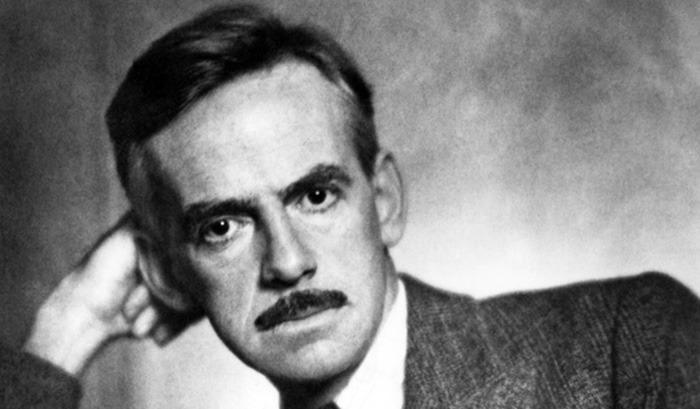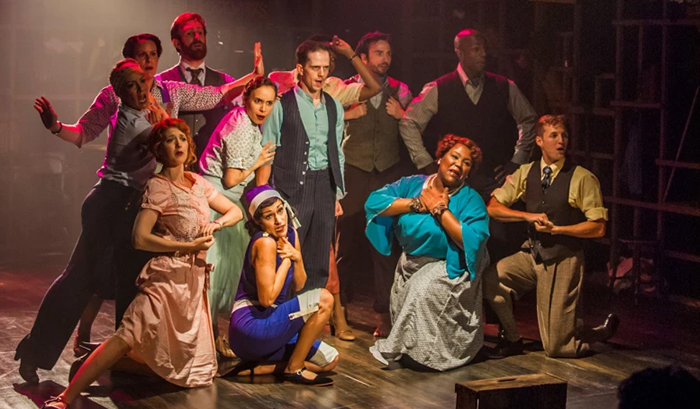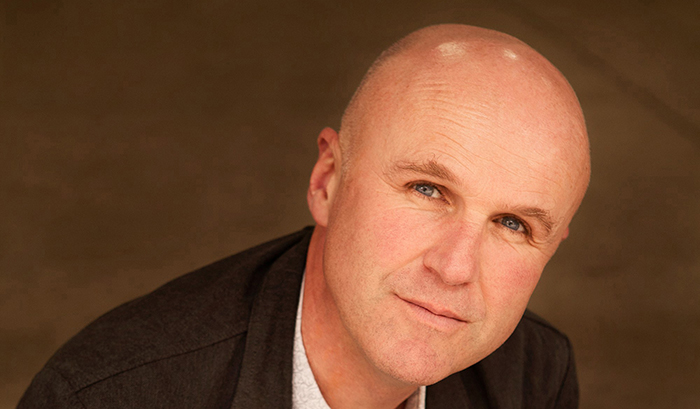Father of Calendar
For 26 years, Champlin served as Arts Editor, film critic and columnist for the Times. He is credited with starting the newspapers Calendar Section.
Born in Hammondsport, N.Y. to a family long active in the wine industry. he served in the infantry in Europe during World War II. He was awarded the Purple Heart and battle stars, and he saw action in the Battle of the Bulge.
Why He Was Silent
Just prior to the luncheon, I interviewed Mr. Champlin. I was impressed by his sense of humor and quiet modesty. His son had told me earlier that his father did not mention his wartime experiences for a long time. The reason, said Charles Jr., was that he didn’t particularly feel heroic because he’d been shot at.
After the war, he went to Harvard on the G.I. Bill, which he credited with giving thousands of war veterans, like himself, the opportunity to make more of themselves and to expand their horizons.
The Early Days
Graduating from Harvard in 1948 with honors, Mr. Champlin joined the staff of Life magazine, which was riding high in those heady early post-war years, and the weekly news magazine Time. He spent 17 years working out of bureaus in New York, Chicago, Denver, Los Angeles and London. While in London, he covered diverse personalities such as the actress Julie Christie, the historian Arnold Toynbee and the Archbishop of Canterbury.
Champlin came to the Los Angeles Times as Entertainment Editor and columnist in 1965. For 23 years, from 1967 to 90, he was the newspapers principal film critic. When Champlin arrived on the Hollywood Scene, the studio system was collapsing. He arrived in time to cover Hollywood’s second Golden Age, during the 1970s.
According to the journalist, it wasn’t only the social climate of the 1970s that changed the movies. He said the industry liberated itself by dumping the Will Hays morality code in 1968. In its stead, it adopted a rating system that made possible “the braver and better movies of that revolutionary decade.”
Examining the 70s
For more of Champlin’s insight into that remarkable period, you can read his 192-page book, “Hollywood’s Revolutionary Decade.” Betweebn the covers, he examines such classic films as “The Wild Bunch,” “Midnight Cowboy,” “Carnal Knowledge,” “The Last Picture Show,” “Network,” “Rocky,” “Star Wars,” “All That Jazz” and “Raging Bull.”
Academy Award-winning actress Eva Marie Saint was on hand to congratulate her old friend Lyles. He went to work at Paramount Pictures 79 years ago. Today at 90, he not only is still dapper, he is a great storyteller. Lyles told the audience how he used Champlin to get James Cagney to accept the AFI Life Achievement Award back in 1972. He invited Champlin to a luncheon at his house when Cagney was visiting.
The Strategy Was Clicking
The three of them sat for hours exchanging war stories. Lyles then got Champlin to do a feature story on Cagney, who had retired from the screen 11 years earlier, in 1961. When the story appeared on the front page of the entertainment section, Lyles used the story to persuade Cagney to appear at the AFI Awards.
Making light of the fact that he is 90 years old, Lyles told the audience,I I have a 90 year old producer friend who is married to a woman who is only 58. He told me, Shes the love of my life. We make love almost every night. Almost on Monday. Almost on Tuesday. Almost on Wednesday.
The audience howled.
As for the Rest of His Life
In addition to writing more than 150 movie reviews a year, Champlin also authored several books, among them, “A Life In Writing The Story of An American Journalist,” and “George Lucas: The Creative Impulse.”
Champlin’s television career began in 1971. He hosted “Film Odyssey” on PBS where he introduced classic films and interviewed major directors, including Jean Renoir and Alfred Hitchcock. He taught film criticism at Loyola Marymount from 1969 to1985. He has been a board member of the American Cinematheque, and he was awarded the Order of Arts and Letters by the French government in 1978 for his contribution to film.
In addition to producing and appearing in several documentaries, Champlin did the voice of one of the characters in the animated “Secret of NIHM.” He appeared as himself in Robert Altman’s take on the new Hollywood, “The Player.”
When His Vision Faded
In 1999, Charles Champlin was diagnosed with a degenerative disease of the eyes, age-related macular degeneration. Two years later, he completed the book, “My Friend, You Are Legally Blind,” which recounts his struggle with his loss of vision.
At the end of our interview, Champlin recalled the famous line uttered by the baseball star Lou Gehrig, who was brilliantly portrayed by Gary Cooper in “Pride of the Yankees.” “I’m the luckiest man alive,” he said.







